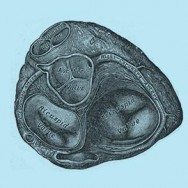
Valve-Sparing Aortic Root Replacement
Background
The aortic root is the section of the aorta (the large artery leaving the heart) that is attached to the heart. The aortic root includes the annulus (tough, fibrous ring) and leaflets of the aortic valve; and the openings where the coronary arteries attach (coronary ostia).
An aneurysm is an abnormal bulge in the wall of a blood vessel. In some patients, an aneurysm can occur at the aortic root, causing the aorta to dilate or widen and the aortic valve to leak. Without treatment, a life-threatening condition called aneurysm dissection can occur. In this condition, blood flows through a tear in the inner layer of the aorta, causing the layers to separate. Blood flow becomes interrupted and causes the arterial wall to burst.
About the surgery
The valve-sparing aortic root replacement is a surgical treatment for aortic root aneurysms. With this method, the aneurysm is repaired while the patient’s own aortic valve is preserved. This avoids having to use a prosthetic valve, and thus also avoids the risk of bio-prostheses degenerating, or the use of blood-thinners with mechanical prostheses.
This procedure is technically difficult. It is performed under general anaesthesia, and with the heart temporarily stopped using cardiopulmonary bypass. First the aorta is cut and the diseased portion is removed. The coronary arteries (blood vessels that supply oxygen-rich blood to the heart muscle) are disconnected. Then the patient’s aortic valve size and height is measured so that an appropriately sized graft can be made. By measuring certain parts the surgeon can ensure that the graft matches the passageway out of the left ventricle, which improves patient outcomes.
Sutures are placed below the aortic valve and through the end of the graft, which connects them together. The patient’s own aortic valve is then re-suspended within the graft and sewn into place. The valve is tested to make sure it opens and closes properly, and without any leakage.
Two small holes are made in the graft, and the coronary arteries are re-connected through them. The other end of the graft is then connected to the rest of the aorta. If part of the aortic arch also need to be replaced, a separate graft is used.
Recovery period
Patients usually stay in the intensive care unit for 1 – 2 days for monitoring, and then in the nursing unit for 4 – 5 days. Two to three tubes stay in the chest to drain fluid from around the heart, which are usually removed 1 – 3 days after the surgery. Full recovery usually takes about 2 months. Most patients are able to drive in about 3 to 8 weeks after surgery. Your surgeon will provide specific guidelines for your recovery and return to work.
Risks of the surgery
As with all surgery, valve-sparing aortic root replacement is associated with some risks. If the patient’s aortic valve cannot be preserved then it will need to be replaced with an artificial prosthesis. Your surgeon will discuss the advantages and disadvantages of these prostheses. Other risks include bleeding, kidney injury, stroke, heart attack, and possibly death.
For more information please visit:
Cleveland Clinic David Reimplantation
All patients should consult their cardiothoracic surgeon for specific information about their medical condition and surgery.

